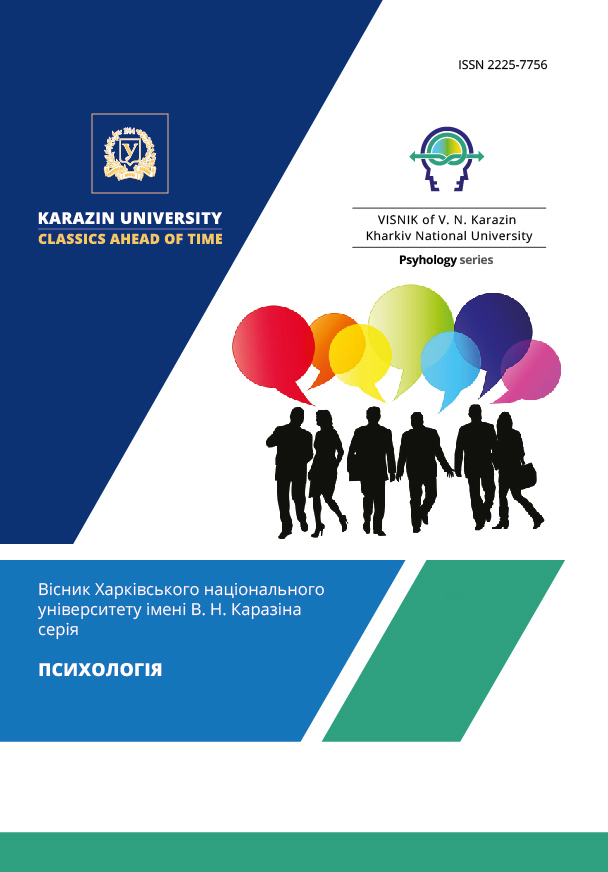Creative productivity of ukrainian artists in the conditions of war
Abstract
The article describes the results of creative productivity research in Ukrainian artists in the conditions of war as a traumatic event. The correlation between war and creative productivity has not been extensively studied in the context of psychology. The most famous so far is the research of Karol Borowiecki and John Hagan, who investigated the individual life cycle of composers and changes in their creative productivity in connection with wars. After the beginning of the full-scale invasion, Ukrainian researchers Lazarenko and Bobrova studied the emotional state of Ukrainians, a result which the data obtained indicated the presence of anxiety, fear, fatigue, and exhaustion, which led to a decrease in productive activity in people. The value and relevance of the research are related to the fact that today there are practically no studies devoted to the study of the relationship between creativity and emotional state in war conditions, but this knowledge will bring us closer to the creativity mechanism understanding. The research involved 37 artists who were on the territory of Ukraine all the time during the year: from the beginning of the full-scale invasion — 02/24/2022 to 02/24/2023. To evaluate and compare creative productivity, data was taken on the number of artistic works for the period of 2021-2022 and 2022-2023. According to the results of the survey, 70.27% of respondents demonstrated an increase in creative productivity, which is associated with a bad mood, that is, a negative emotional state. A moderate correlation between the evaluation of the emotional state and creative productivity was revealed, and it was found that in the conditions of war, the features of the emotional state and energy are a certain criterion for the growth of creative productivity. From a neurobiological point of view, the inverse correlation between mental activation and creative productivity is explained.
Downloads
References
Akinola, M., & Mendes, W. (2008). The dark side of creativity: Biological vulnerability and negative emotions lead to greater artistic creativity. Personality and Social Psychology Bulletin, 34(12), 1677–1686. https://doi.org/10.1177%2F0146167208323933
Borowiecki, K. J., & O'Hagan, J. W. (2012). Impact of war on individual life-cycle creativity: tentative evidence in relation to composers. Journal of Cultural Economics, 36(4), 279-299. https://doi.org/10.1007/s10824-012-9187-1.
Emery, D. (1993). Self, creativity, political resistance. Political Psychology, 14(2), 347–362. https://doi.org/10.2307/3791415
Jung, R. (2014). The neuroscience of creativity. Neuroscience & Biobehavioral Reviews, 45, 224-237. https://doi.org/10.1016/j.neubiorev.2014.02.013
Lazarenko, V., Bobrova, A., Khassai, Y., Filipchuk, L., Syrbu, O., Lomonosova, N., & Nazarenko, Y. (2022). The First Days of Full-Scale War in Ukraine: Thoughts, Feelings, Actions Initial research results. https://doi.org/10.13140/RG.2.2.33334.57927
Lazarenko, V., Bobrova, A., Khassai, Y., Filipchuk, L., Syrbu, O., Lomonosova, N., & Nazarenko, Y. (2022). Three months of full-scale war in Ukraine: Thoughts, Feelings, Actions Findings of the second wave of research. https://doi.org/10.13140/RG.2.2.25718.47688
Shchepakin, V. (2022). Artists of Kharkov in the Russian-Ukrainian war. Culture of Ukraine, (78), 100-111. https://doi.org/10.31516/2410-5325.078.13. [In Ukrainian]
Simonton, D. K. (1977). Creative productivity, age, and stress: A biographical time-series analysis of 10 classical composers. Journal of Personality and Social Psychology, 35(11), 791–804. https://doi.org/10.1037/0022-3514.35.11.791




